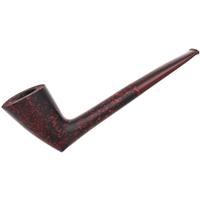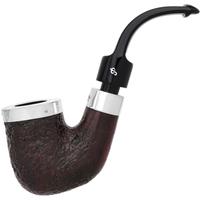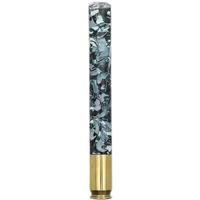What Is Santa Susana And Why Should You Care?
The Santa Susana Field Lab was a research facility on a 2,850-acre site in the hills above the San Fernando and Simi valleys. Built in 1947, it was used to test experimental rocket systems and was home to 10 nuclear reactors. In July 1959, one of those reactors suffered a partial meltdown. Workers tried to repair it. When they couldn't, they were ordered to open the reactor's large door, releasing radiation into the air. It likely spread to nearby communities such as Simi Valley, Chatsworth and Canoga Park.
Six weeks after the meltdown, the Atomic Energy Commission issued a statement saying that there had been a minor "fuel element failure" but there had been "no release of radioactive materials" into the environment. That wasn't true.
In 2017, reporter Joel Grover of NBC4, our media partner, documented all of this in "L.A.'s Nuclear Secret," an eight-part series exposing the reactor incident and subsequent cover-up.
NASA and aerospace company Rocketdyne continued to use the Santa Susana facility for thousands of rocket tests through 1990. Those activities also released all sorts of toxic chemicals into the air and deposited them into the groundwater, the surface water and the soil.
Is There Something Lurking In Our Beloved Perique?
- Thread starter mtwaller
- Start date
You are using an out of date browser. It may not display this or other websites correctly.
You should upgrade or use an alternative browser.
You should upgrade or use an alternative browser.
- Status
- Not open for further replies.
Good old Recketdyne. Growing up in the SF Valley I would hear them testing their engines. They also moved spent fissionable material onto their Canoga Park property. Geiger counters would go wild around their perimeter as they were not exactly careful in transporting the stuff. A number of people at that facility developed cancer. Wonderful heartwarming people, the management of Rocketdyne.
I don't think there are many people in a position to offer a reasonable reply to OP, simply because way too many details are missing.
First and foremost: What are the chemicals being released in the parish? (We'd need to know what they are before we can assess how they are absorbed or stored by plants and how they would survive the curing and smoking process. E.g., volatile petrochemicals are carcinogenic, but they also dissipate quickly if exposed to open air.). It would also be nice to know how they are being released (into the air? into the groundwater? into a river?) and the quantities being released. Where are the tobacco fields relative to the source of the chemicals? (Upstream or downstream? Near or far?)
It's an interesting thought, but without a lot more research and information, I don't think any of us can offer an answer to the actual question asked by the OP that is worth anything.
My totally uninformed guess is that the chemicals can't be too dangerous or the EPA would have shut the place down. And any amounts that come through in tobacco will be far less than what the natives of St. James are exposed to (since they are breathing the air and drinking the water 24/7).
First and foremost: What are the chemicals being released in the parish? (We'd need to know what they are before we can assess how they are absorbed or stored by plants and how they would survive the curing and smoking process. E.g., volatile petrochemicals are carcinogenic, but they also dissipate quickly if exposed to open air.). It would also be nice to know how they are being released (into the air? into the groundwater? into a river?) and the quantities being released. Where are the tobacco fields relative to the source of the chemicals? (Upstream or downstream? Near or far?)
It's an interesting thought, but without a lot more research and information, I don't think any of us can offer an answer to the actual question asked by the OP that is worth anything.
My totally uninformed guess is that the chemicals can't be too dangerous or the EPA would have shut the place down. And any amounts that come through in tobacco will be far less than what the natives of St. James are exposed to (since they are breathing the air and drinking the water 24/7).
In reality, the whole system is f****d. Arsenic in rice, GMO this and that, glyphosate on everything, years of lead pollution from the leaded gasoline of yore and so on.
Heck with it, I’m chillin with a bowl of fine tobacco to get away from it all.
I do say though that IMHO this thread is some interesting food for thought.
Heck with it, I’m chillin with a bowl of fine tobacco to get away from it all.
I do say though that IMHO this thread is some interesting food for thought.
Cosmic, thanks for all of that information. I never regret posting questions like this on here because I know members who are well versed and more knowledgeable than myself can help shed light on the subject. Certainly valid points all across the board from other members, as well. The less time Perique spends in St. James the better, it seems to me. Apologies if it seems I was trying to incite mass hysteria, I just thought it was worth mentioning on here since so many of us love the stuff. Just trying to do my fellow pipe smokers a solid, it’s something I was ignorant about and wish I would’ve known before now.
Interesting, hardly the quaint southern countryside I pictured. I would like to avoid chemical laden tobacco, but I think the amount of Roundup, antibiotics, and hormones in a Taco Bell burrito would put a tin of tobacco to shame.
And God knows what else.but I think the amount of Roundup, antibiotics, and hormones in a Taco Bell burrito would put a tin of tobacco to shame.
No, I take that back...I don't want to assume God knows what's in those things.
Heavens to Betsy, why? Just because the physical plant becomes radioactive over time and upon decommissioning has to be sawn up and buried, along with its contents, deep underground for the 250,000 years it takes for the radioactive isotopes to become relatively inert? Where's the problem with that? Seems an efficient way to boil water.Nuclear power plants are the only proof necessary to demonstrate that our species is completely insane.
Unfortunately, with the world's appetite to run through all hydrocarbon resources at a high clip, and with solar, wind, water and photovoltaics unlikely to fill the gap, it leaves nuclear if we want the lights on- and iPhones charged. Well, that's current technology. Hopefully there'll be a better solution.
Exactly. I'd bet not one in a thousand people have any idea that boiling water is what these plants do.Heavens to Betsy, why? Just because the physical plant becomes radioactive over time and upon decommissioning has to be sawn up and buried, along with its contents, deep underground for the 250,000 years it takes for the radioactive isotopes to become relatively inert? Where's the problem with that? Seems an efficient way to boil water.
Not to mention how old many of them are...some supposedly are now well beyond their original intended lifespan (or so I've heard, but I don't know that for certain).
All I know is that I have no confidence that these plants are going to be maintained properly indefinitely...even if we're lucky enough to never have some disaster such as Fukushima or Chernobyl.
- Status
- Not open for further replies.











